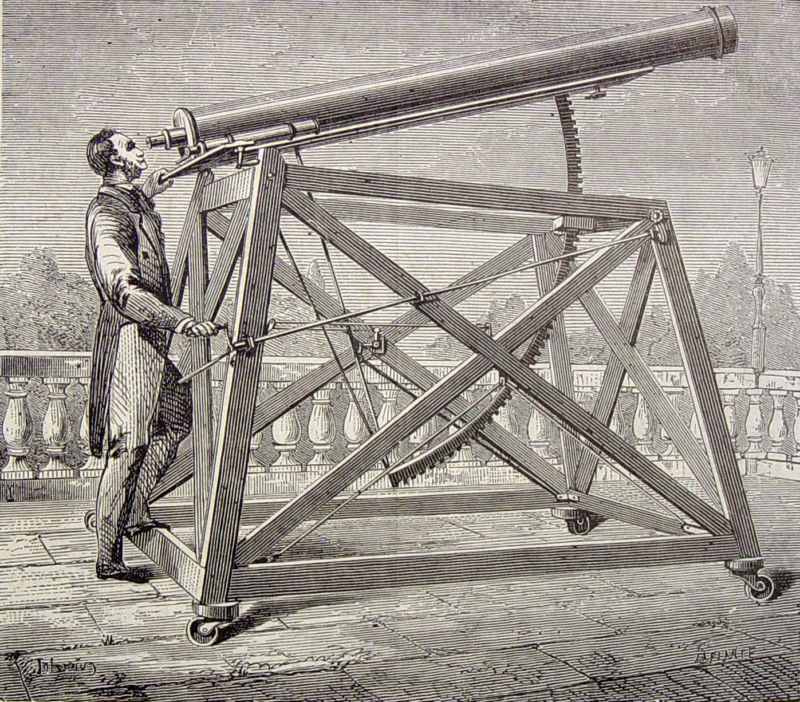One night of telescope time rules out black hole/dark matter idea
Ars Technica » Scientific Method 2019-04-06

Enlarge / 19th-century etching of a telescope in use. (credit: Fondo Antiguo de la Biblioteca de la Universidad de Sevilla / Flickr)
Much of the Universe behaves as if there's more matter there than we can see. Dark matter explains this by positing that there's matter present that we can't see, and evidence has piled up in favor of this idea. In contrast, evidence for the identify of dark matter has behaved in an opposite manner: every thing we've done to look for it has come up empty.
The latest bit of emptiness was published this week, and it seemingly puts an end to one of the possible remaining explanations for dark matter: black holes that formed shortly after the Big Bang and have been structuring the Universe ever since. While earlier studies have seemingly ruled out larger versions of these primordial black holes, the new study closes the window on anything more massive than a large asteroid. And it was all accomplished with just a single night of telescope time.
From the dawn of time
Black holes would seemingly make fantastic candidates for dark matter, given that they're black and thus difficult to detect. But there's a number of reasons they don't work especially well. For one, while light may not escape a black hole, it's often produced in prodigious amounts by the material just outside a black hole. So it's not clear whether large numbers of black holes could somehow go undetected.